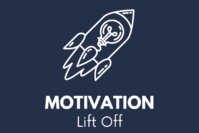The Importance of Goal Setting in Recovery
When you’ve experienced a setback or failure, it’s easy to lose sight of your objectives and become mired in disappointment or regret. However, one of the most effective ways to bounce back is by setting solid, achievable goals. Goals give you a roadmap, guiding you out of the fog of failure and setting you on a path toward success. They provide a sense of direction and purpose, two elements often lost in the aftermath of a setback.

The eBook’s Unique Approach to Goal Setting
The eBook 7 Steps to Bouncing Back: Transform Failure into Success offers a unique approach to goal setting that is tailored to those recovering from failure. It doesn’t just tell you to set goals; it guides you through the process, helping you set goals that are specific, measurable, achievable, relevant, and time-bound (SMART). This structured approach ensures that your goals are not just wishes but achievable outcomes.
Why Traditional Goal Setting Often Fails
Many people set goals but fail to achieve them. One reason is that their goals are either too vague or too ambitious. Another reason is a lack of commitment or a clear plan to achieve them. The eBook addresses these common pitfalls by providing a step-by-step guide to setting goals that are both challenging and achievable. If you’ve struggled with goal setting in the past, this eBook can provide the structure and guidance you need.
Aligning Your Goals with Your Values
Another crucial aspect of effective goal setting is ensuring that your goals align with your values and long-term vision. When your goals are in sync with your core beliefs, you’re more likely to be committed to achieving them. The eBook helps you identify your values and shows you how to align your goals accordingly, making the process not just a task but a journey of self-discovery.
The Role of Accountability
Setting a goal is just the first step; keeping yourself accountable is what sees you through to the end. The eBook offers practical tips on how to keep yourself accountable, including setting milestones, tracking your progress, and even finding an accountability partner. By following these steps, you’re not just setting goals; you’re setting yourself up for success.
From Goal Setting to Goal Getting
The ultimate aim of setting goals is to achieve them, and that’s what the eBook focuses on. It doesn’t just leave you with a list of objectives; it equips you with the skills and strategies to achieve them. From dealing with obstacles to staying motivated, 7 Steps to Bouncing Back: Transform Failure into Success covers all the bases.
Goal setting is more than just a recovery strategy; it’s a life skill that can set you on the path to success, no matter where you’re starting from. With the comprehensive guide provided by this eBook, you have all the tools you need to transform your failures into stepping stones toward success. So don’t let setbacks keep you down; set solid goals and bounce back stronger than ever.
The Psychological Benefits of Goal Setting
Setting goals isn’t just a practical endeavor; it has psychological benefits that can help you bounce back from failure more effectively. Goals give you something to strive for, which can be incredibly motivating. They can turn your focus away from past failures and redirect your energy toward future success. This shift in focus is often the first step in recovering your self-esteem and confidence, which are usually the first casualties of failure. The eBook 7 Steps to Bouncing Back: Transform Failure into Success delves into the psychology of goal setting, offering insights that can help you understand why some goals fuel your drive while others drain it.
The Importance of Flexibility in Goal Setting
While it’s crucial to set specific and challenging goals, it’s equally important to be flexible in your approach. Life is unpredictable, and rigid goals can quickly become obsolete. The eBook teaches you how to adapt your goals to changing circumstances without losing sight of your ultimate objectives. This adaptability can be particularly beneficial when you’re recovering from a setback, as it allows you to adjust your goals to better fit your new reality.
The Synergy of Short-Term and Long-Term Goals
One of the unique aspects of the eBook’s approach to goal setting is the emphasis on creating a synergy between short-term and long-term goals. Short-term goals serve as stepping stones to your ultimate objectives, making the journey seem less daunting. They also provide opportunities for small wins, which can be incredibly motivating when you’re bouncing back from failure. Learn how to master this balance with the eBook.
The Power of Visualization
Another technique the eBook explores is the power of visualization. By vividly imagining the successful completion of your goals, you can boost your motivation and increase your chances of success. Visualization isn’t just wishful thinking; it’s a powerful tool that can help you overcome the mental and emotional barriers that often accompany failure.
The Community Aspect of Goal Setting
Lastly, the eBook touches on the community aspect of goal setting. Sharing your goals with trusted friends or family can provide an additional layer of accountability and support. When you’re recovering from a setback, this support network can be invaluable.
Goal setting is a multifaceted skill that involves much more than just jotting down what you hope to achieve. It’s a complex process that requires thought, planning, and a deep understanding of yourself and your capabilities. 7 Steps to Bouncing Back: Transform Failure into Success offers a comprehensive guide to mastering this skill, making it an invaluable resource for anyone looking to recover from failure and achieve lasting success.
As an Amazon Associate we earn from qualifying purchases through some links in our articles.




